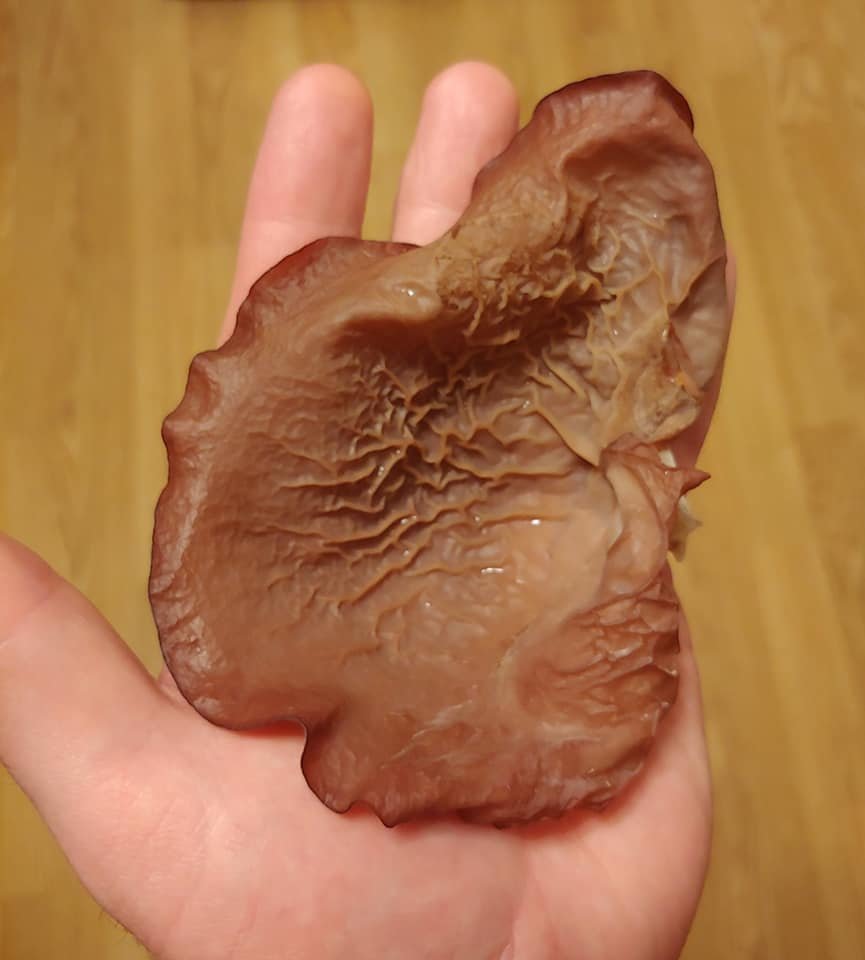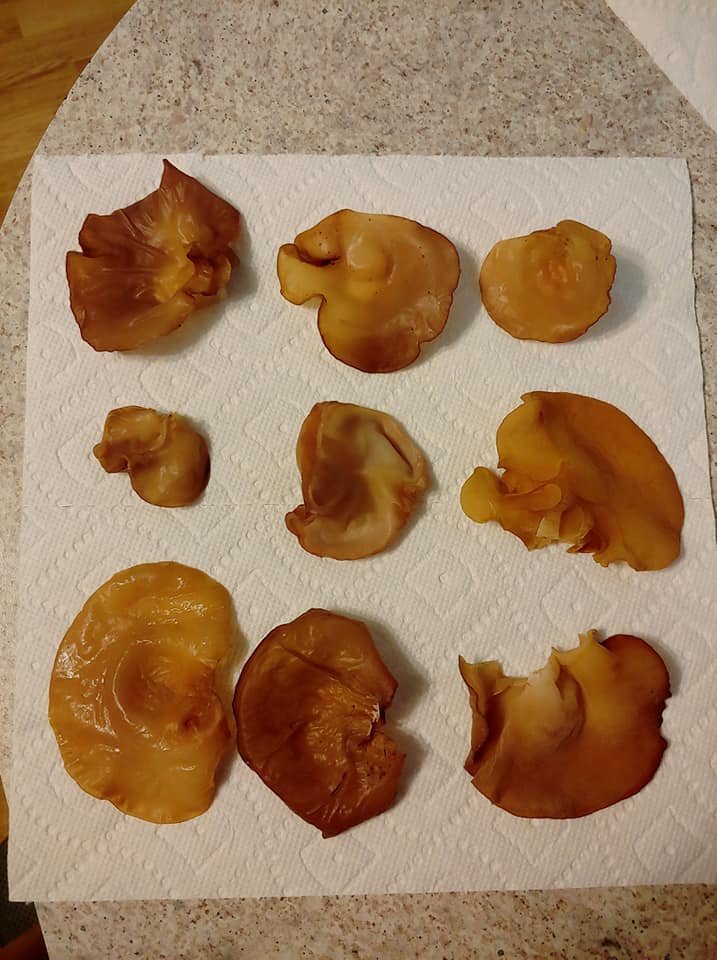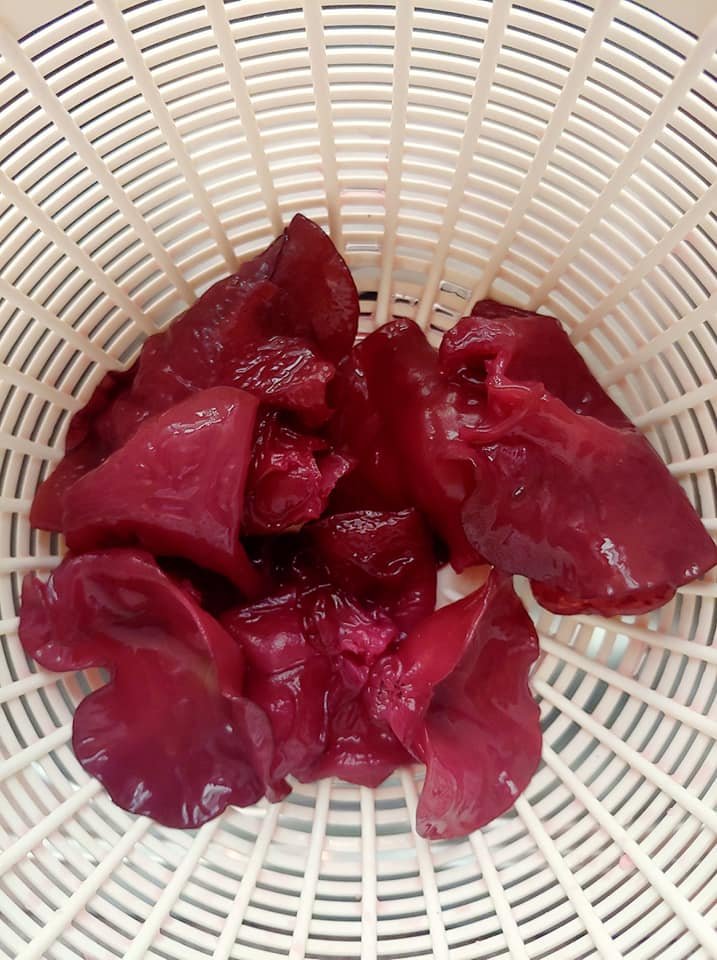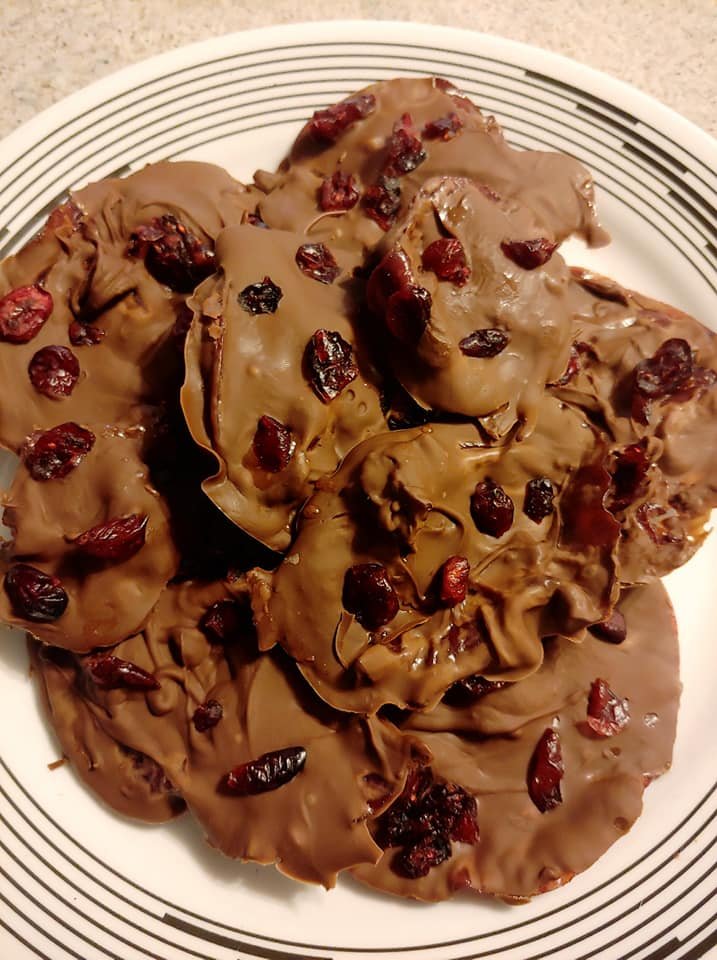Fungi Friday: The Wood Ear
Photos by Maureen Fellinger
By Maureen Fellinger
Let’s talk about jelly fungi! These types of mushrooms have a gelatin-like consistency and can be shapeless or shaped like cups. During dry periods, jelly fungi become rather hard, but after a decent rain, they return to their original gelatinous, rubbery texture. The only type of jelly fungus that can be found in the wild as well as in the grocery store is the wood ear mushroom (Auricularia auricula).
Wood ear mushrooms are reddish to grayish brown, and have an earlike cup shape. They generally will grow in rotting wood and can be found between May and November. Another name for this fungus is Judas’ Ear; this name alludes to the fact that they most commonly will grow on elder trees, which is the tree species that Judas Iscariot hanged himself on after betraying Jesus Christ. There is a legend that the wood ears that appear on elder trees represent Judas’ tormented soul.
Wood ears are a wonderful edible and medicinal mushroom. High in protein and iron, and packed with Vitamin B, wood ears are known to positively affect blood coagulation and decrease blood cholesterol levels. Please note that anyone taking blood pressure medications should not consume this fungus. Due to its strange, jellylike texture, wood ears are best consumed in soups. If you have ever had Chinese hot and sour soup, it is likely that you have had some wood ear mushrooms. But, if you are feeling a little adventurous, try out this interesting recipe by Very Vegan Val for chocolate covered, cranberry wood ears. I found it to be surprisingly delicious!
*The writer is Agraria’s Education Administrator.






